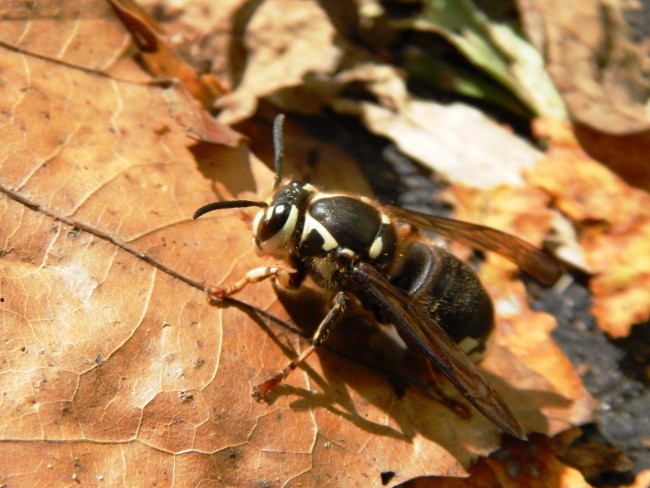Bald-faced Hornets
Published on September 15, 2016
Bald-faced Hornets (Dolichovespula maculata) have a mostly undeserved reputation for being vicious, pests and safety hazards. They are actually fairly beneficial insects with a role in the environment. Sometimes called White-faced Hornets, Bull Wasps, or Blackjackets, these wasps are actually not true hornets, but large aerial yellowjackets.

Bald-faced Hornet
They mostly go unnoticed and cause no issues until suddenly someone becomes aware of their large paper nests and get scared. Now these insects, which have been living in that same place throughout the earlier part of the spring and summer causing no trouble, are seen as a danger and something to be feared and destroyed.
Most of the time, Bald-faced Hornets are actually beneficial. They hunt other insect prey (including some pests) and bring them to feed themselves and their developing young. They predate on quite a few insects, considering that a nest can hold 400-700 workers by the end of the season. Interestingly, one of their favorite food items are their smaller cousins, Yellowjacket wasps. They also serve as minor pollinators (particularly late in the season when they visit more flowers to obtain nectar and hunt less since they have less young to feed).
A typical nest starts when an overwintering queen wakes up in the spring and finds a likely location to start her nest. Though most of the time they choose a location in a tree from 2′-60′ high, they sometimes will use the eaves of a building or other structure that might give some cover from the elements. The queen chews some wood fiber, mixes it with saliva, and then shapes it into the first hexagonal paper cells that will house her eggs. Each egg takes about 6 days to produce young. She feeds and cares for these, who then become the first workers and will raise, provide, and protect the young until the end of the season. A new paper nest is quite small and has the opening at the very bottom.

The typical paper nest
>> Read more at the Capital Naturalist blog.